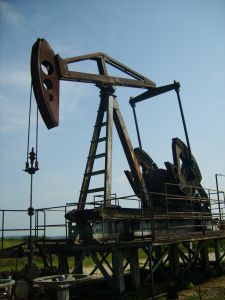 |
| BMW's hydrogen-powered car. |
The cost is tremendous and its perpetuation a main driver of the global economy.
All that energy equates to about 15 terawatts, give or take, per year. A terawatt is a trillion watts. And demand, while stymied somewhat by recession-aided stagnation, is expected to grow.
The problem is that we humans are burning, churning and polluting our way through a finite fuel source. What if, on the other hand, we got handed to us a viable energy source that doesn't stink up the place?
We did. Or we do. It's the sun and an element six times lighter than air -- hydrogen.
Sure, the statement's old new to anybody on the clean energy front. "Solar, solar, solar," the mantra drives oil industry execs to distraction.
But tapping into the sun for all the world's energy is possible, we just have to figure out how to pull it off, says Derek Abbott, who looked at energy problem as an engineer would, calculating out a potential solution without letting minor details get in the way.
In a six-part lecture posted on YouTube and viewed in most cases just several hundred times, Abbott, a professor at the University of Adelaide in Australia, spells out just what it would take to capture solar energy and provide enough to power the world's 15 terawatts. The sun, he says, produces enough energy to power about 10,000 of our planets, or 174,000 terawatts.
Imagine 500-by-500 square kilometers of parabolic mirrors used to capture the sun's rays and reflect it back to boil water used to create electricity. Abbott's concept is to limit "digging in the ground" for energy, thus going with mirrors rather than photovoltaic panels.
He says that is all it would take, should his figures prove correct, to crank up those 15 terawatts.
"That's the size of Victoria," says the Australian, referring to the southeastern state of his country that stares across the Bass Strait at Tasmania. "Would anybody miss Victorians?"
Possibly not New Zealanders, but that's incidental. (I'm hardly an expert in down-under razzes but a good example is the reference to Miss New Zealand in a couple of "Flight of the Conchords" episodes by Australians.)
Abbott proposes to solve the on-again, off-again nature of solar power by using it to produce hydrogen via electrolysis of water. The electricity created by solar energy would create the separation of the hydrogen and oxygen molecules. The hydrogen could be exported as fuel.
Abbott's concept involves garnering government support for research and some initial subsidies and is focused on what Australia can do. His university has as a motto: "Our students make an impact on the world."
Abbott points out that his theories require vetting and further research. But he also mentions that Henry Ford started building his wildly successful Model T prior to construction of many sealed roads and service stations. So it's a Frisbee. What the heck? I'm always up for a game.
As for the safety of hydrogen, Abbott says he was encouraged by a University of Miami study that showed how a puncture of a hydrogen tank on a vehicle compares with one in a gas-powered vehicle. One explodes, one doesn't. Suffice to say hydrogen cars, which have been embraced by the likes of Jay Leno, won't necessarily work for a Michael Bay film.
BMW offers its hydrogen powered series 7 car with an internal combustion engine. And as Leno says, "It's a fuel just like any other fuel." The fuel is maintained cold enough to be in a liquid state.
Leno says he suspects hydrogen as a fuel will move rapidly. Of course with the BMW, the driver can switch without any trouble to gasoline.
As BMW says, "The future is closer than you think."
Photo: Courtesy bmwcoop.com.













